Clearfell logging
On this page |
How these concepts can be seen in Google Earth. |
Use Google Earth to see the extent of clearfell logging in East Gippsland or Central Highlands (including Melbourne's domestic water supply catchments) |
|
Go on a export woodchip tour using Google Earth. Follow the woodchip trail from the forests of East Gippsland to huge industrial paper mills in Japan via the Midway export woodchip mill in Geelong. |
|
|
|
| Also see | |
Do your own rainforest audit of clearfell logging near rainforest using Google Earth. See for yourself if logging breached the rainforest buffer guidelines. |
What is Clearfell Logging?
The primary method for obtaining hardwood woodchips and sawn timber from native forest is the controversial practice of clearfell logging. Clearfell logging involves the removal of almost all vegetation from an area of forest, called a logging 'coupe'. About 80% of all the trees cut down in a typical coupe are sent to be converted into woodchips.
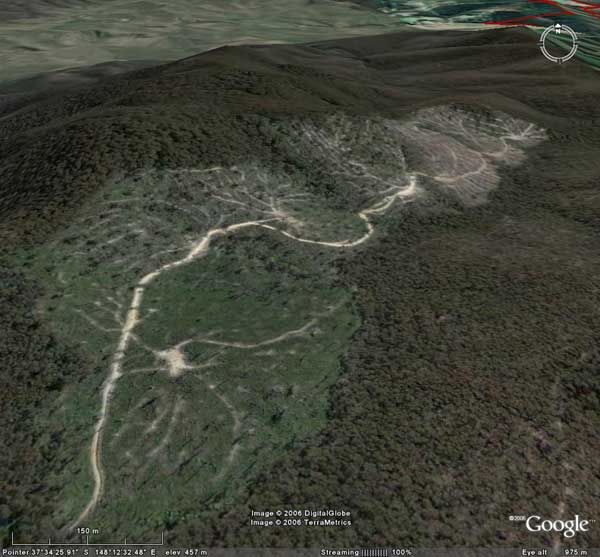
Above: A series of logging coupes next to each other on the Tarra range in East Gippsland that were clearfell logged over a few years. The total area logged is almost a square kilometre (so far).
A typical biodiverse wet native forest before clearfell logging consists of trees that are generally 70 to 300 years old.
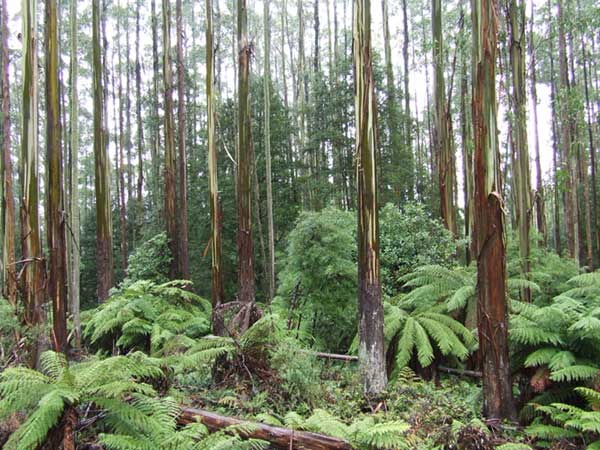
This 70 year old biodiverse native forest at Mt Baw Baw is scheduled to be clearfell logged. It is also the habitat for mixed rainforest and the endangered Baw Baw frog.
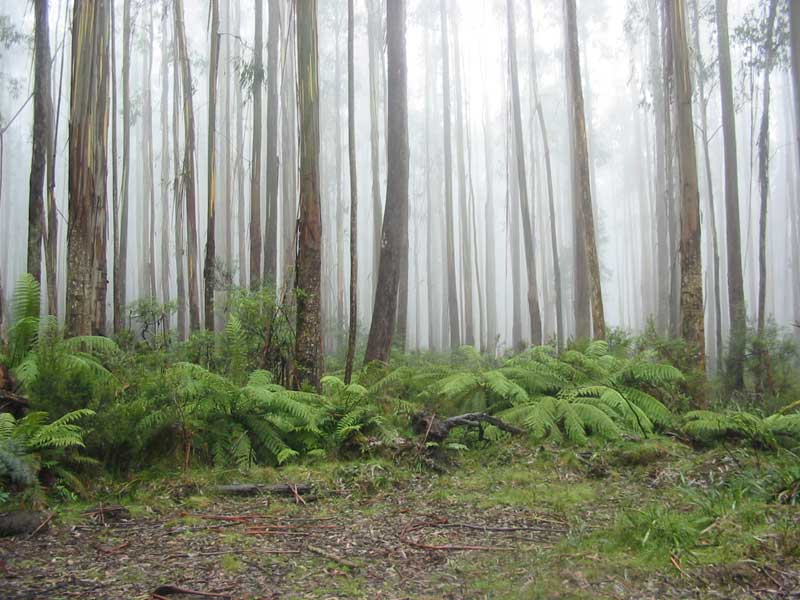
Forest in the dam Thomson catchment also scheduled to be clearfell logged.
Once logged, the area is burnt using Napalm that is dropped from helicopters. The idea is that the area logged is revegetated with an even age crop of trees which is similar to a plantation. Trees with no commercial value for sawlog or woodchip may initially be left standing but routinely die. This is a desirable outcome for the Government foresters as this prevents canopy shade which suppresses the regrowth of seedling trees.
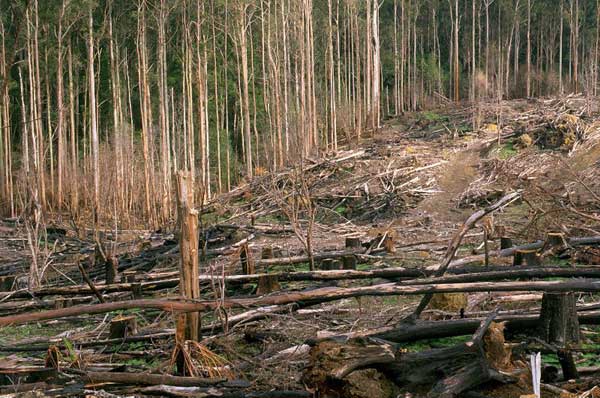
Freshly clearfell logged and burnt coupe in the Otways at Callahan's Creek 2001.
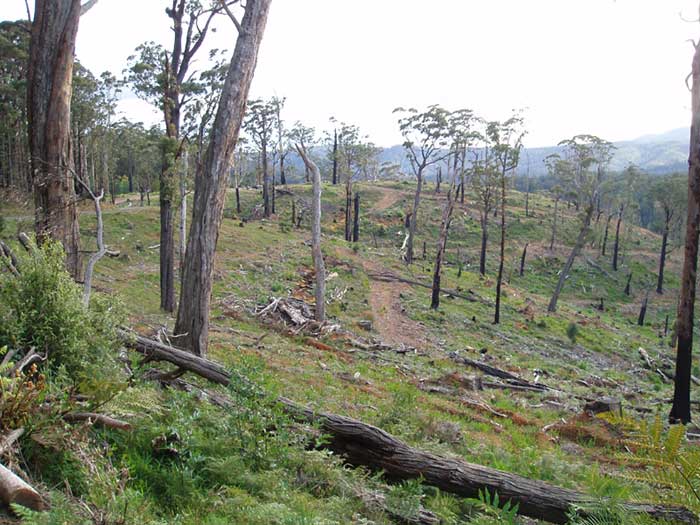
Freshly clearfell logged coupe in the Central Highlands near Mt Baw Baw.
Photo taken September 2006.
Wallabies from unlogged forest like to eat the young eucalyptus trees that try to grown in these logged out areas. 1080 poison is laid by the forest department to kill these wallabies.
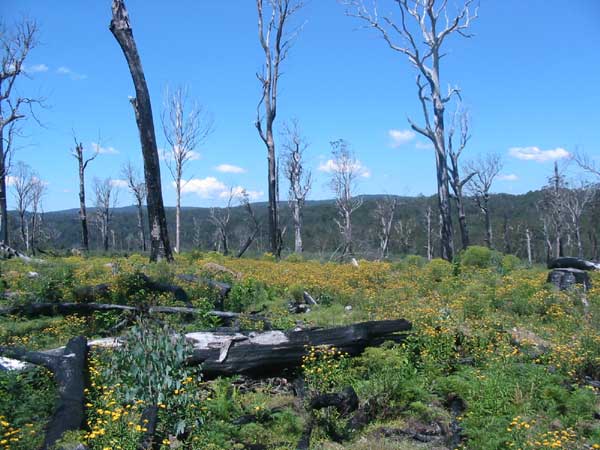
This site at East Errinundra RSOS 81 was clearfell logged in 2001. The photo taken in January 2005 shows most of the remaining old trees have also died and only fire weed has regrown as wallabies eat most of the regrowth eucalyptus trees.
If the trees do grow back the native forest logging industry likes to see even aged regrowth like a plantation crop that can be logged again for woodchips within 25 years or possibly some sawlogs in 60 years.
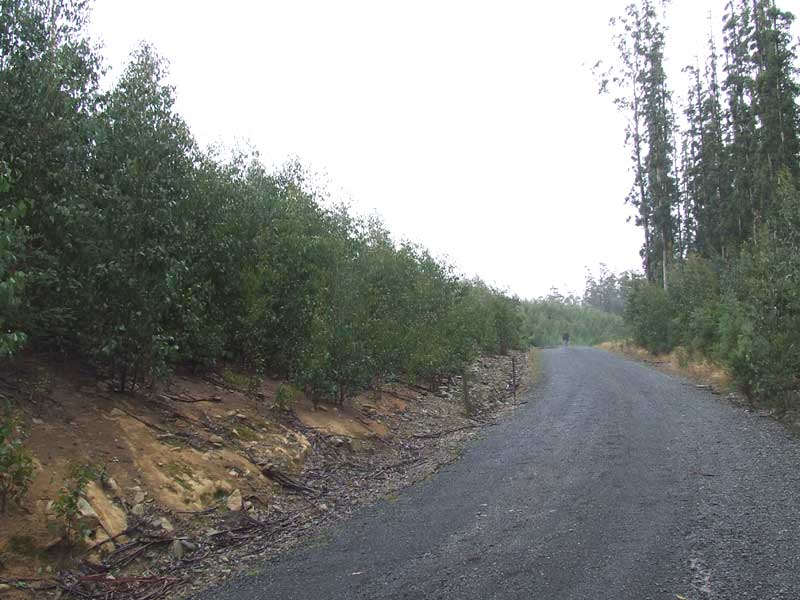
Four year old even-aged plantation regrowth has replaced the natural forest on a coupe at Mt Baw Baw.
Clearfell logging in 60-80 year rotations will never allow trees to grow big and old enough to develop hollows for native animals and birds to live in.
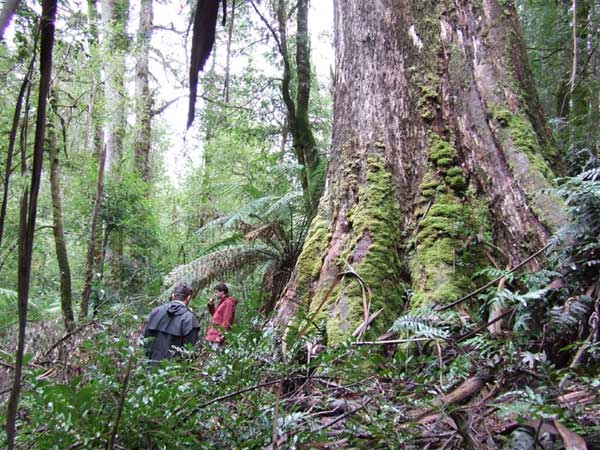
Huge old trees (old growth) such as this one pictured are over 300 years old. Clearfell logging in 60- 80 year rotations will never allowed trees to live long enough to grow this big.
Clearfell logging is destroying the biodiversity of native forests across Australia. The habitat of native plants, birds and animals is being systematically demolished.
Most of the forest is woodchipped.
On average about 20% of the trees cut down in East Gippsland are used for sawn timer and the other 80% end up being sent as whole trees to be woodchipped and then exported to Japan.
For example, much of the East Gippsland forest is exported out of the huge Japanese woodchip mill at Eden NSW. On the left of the image below you can see a woodchip pile which is over 180 metres across.
The scale of this native forest woodchipping operation can be easily seen by taking note of the cars in the carpark south of the main woodchip pile.
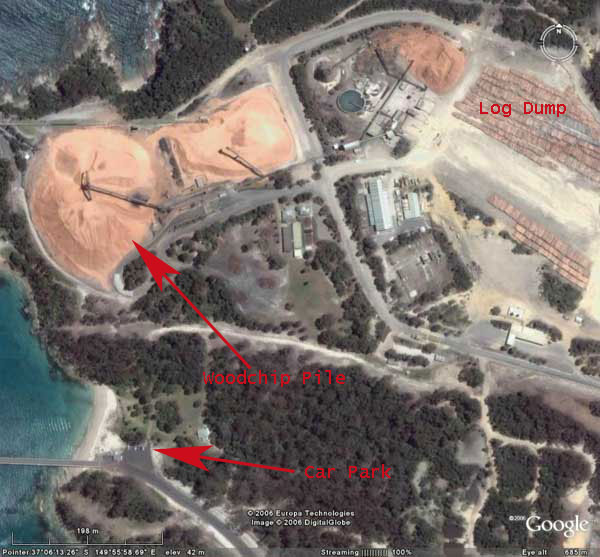
Harris Daishowa export woodchip mill at Eden NSW.
Download Google Earth place mark![]() and use the measure tool within Google Earth to check the size of the woodchip pile for yourself.
and use the measure tool within Google Earth to check the size of the woodchip pile for yourself.
It is interesting to use Google Earth to compare the size of the woodchip industry to the sawmill industry. This can be done by comparing the volumes of logs (former habitat trees) processed at the different mills.
For example, the image below is an average sawmill in East Gippsland where the largest log stack is 45 metres long. Compare this to the log dump at Harris Daishowa (image above top right) where former native forest habitat trees are stacked in a dozen rows over 150 metres long and up to four metres height, ready for woodchipping.
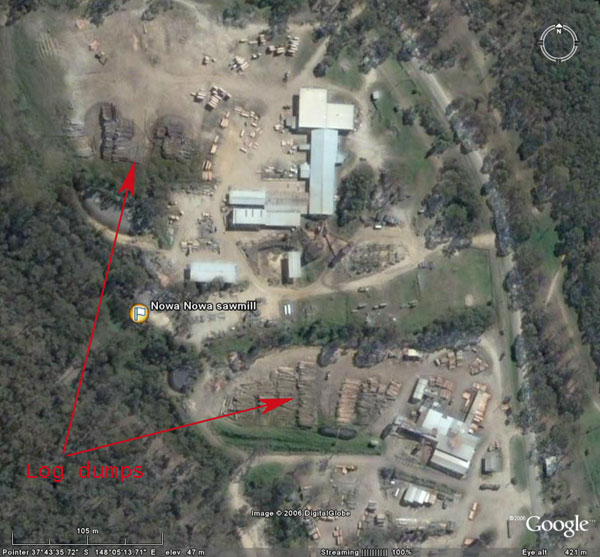
The small log dumps at this sawmill at Nowa Nowa are nothing compared with the massive log dumps at the Harris Diashowa woodchip mill. These facts drive home the point that most native forest logging is for export woodchips.
Download Google Earth place mark![]() and use the measure tool within Google Earth to check for yourself.
and use the measure tool within Google Earth to check for yourself.
The native forest logging industry often argues that logging is for sawlogs and that woodchips are a byproduct of the logging industry. However when you consider that 80% of the whole trees are woodchipped and provide at least 60% of revenue to conduct the logging operations, clearly woodchipping is the primary industry.
See a detailed case study analysis of the native forest woodchipping industry on the OREN website titled: Woodchip Driven Logging in the Otways: An Economic Analysis.
Woodchip Tour
Go on an export woodchip tour from the forests of East Gippsland to the huge industrial pulp mills in Japan (owned by Nippon Paper) via the export mill in Geelong called Midway Pty Ltd.
Clearfell Logging Myths
The well resourced lobby groups for the native forest woodchip and logging industries like to spread many myths regarding clearfell logging when they talk to the media. Their aim is to create a perception in the general community that clearfell logging is an environmentally acceptable practice. The following are some of the key myths along with responses that are detailed on the Otway Ranges Environment Network (OREN) website.- Myth "native forests regenerate after clearfell logging".
Response on OREN web site.
- Myth "clearfell logging mimics natural wildfire regeneration". Response on OREN website.
- Myth "woodchips are produced from waste wood".
Response on OREN website.